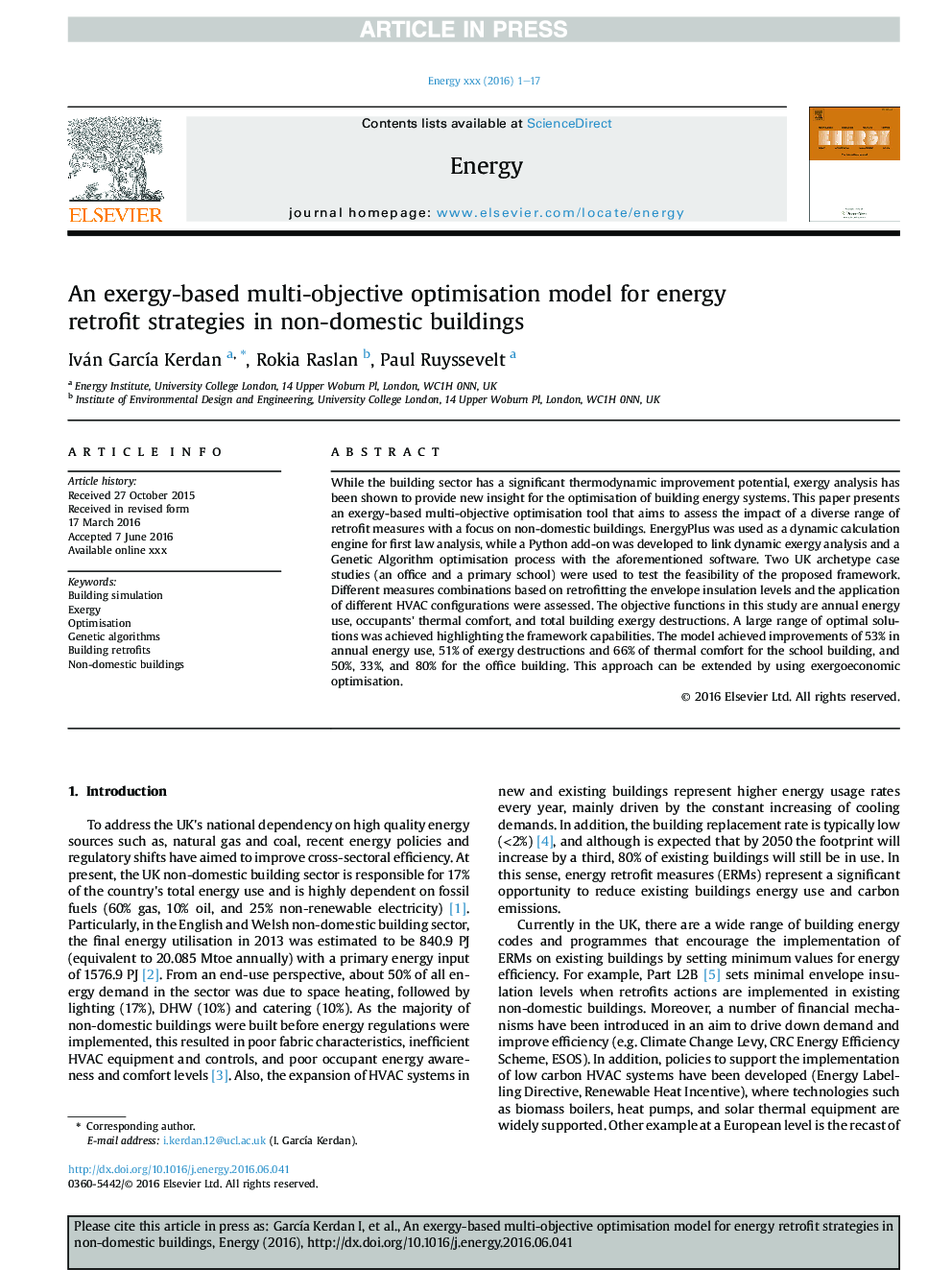| Article ID | Journal | Published Year | Pages | File Type |
|---|---|---|---|---|
| 5477157 | Energy | 2016 | 17 Pages |
Abstract
While the building sector has a significant thermodynamic improvement potential, exergy analysis has been shown to provide new insight for the optimisation of building energy systems. This paper presents an exergy-based multi-objective optimisation tool that aims to assess the impact of a diverse range of retrofit measures with a focus on non-domestic buildings. EnergyPlus was used as a dynamic calculation engine for first law analysis, while a Python add-on was developed to link dynamic exergy analysis and a Genetic Algorithm optimisation process with the aforementioned software. Two UK archetype case studies (an office and a primary school) were used to test the feasibility of the proposed framework. Different measures combinations based on retrofitting the envelope insulation levels and the application of different HVAC configurations were assessed. The objective functions in this study are annual energy use, occupants' thermal comfort, and total building exergy destructions. A large range of optimal solutions was achieved highlighting the framework capabilities. The model achieved improvements of 53% in annual energy use, 51% of exergy destructions and 66% of thermal comfort for the school building, and 50%, 33%, and 80% for the office building. This approach can be extended by using exergoeconomic optimisation.
Keywords
Related Topics
Physical Sciences and Engineering
Energy
Energy (General)
Authors
Iván GarcÃa Kerdan, Rokia Raslan, Paul Ruyssevelt,
